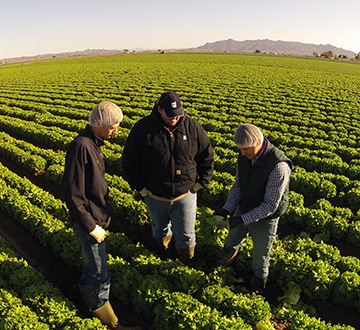News and Stories
A Student Becomes the Teacher

I sometimes get asked if I ever get tired of relocating to the Yuma, Arizona region for the winter growing season that lasts from mid-November to late March. I can’t say that it’s always easy and pleasant. In fact, it can be difficult to be away from family and friends for long stretches of time, but I wouldn’t trade the last 12 winters’ worth of valuable produce experience for anything.
Every single growing season has been different and provided its own unique challenges based on weather, market conditions, labor issues, and other factors. That’s one of the things that keeps the job of a Markon Inspector from ever becoming boring or mundane. Whereas last year’s winter season was defined by relatively mild weather, an abundance of product, and incredibly low demand, this year will surely be remembered for the weather rollercoaster that baffled growers and created industry-wide shortages that we’ve discussed in our Live from the Fields videos and here in Seedlings. Witnessing these and other scenarios in person, getting a seasoned farmer’s take on things firsthand, being able to look back and compare situations from previous years—these are all things that have helped me to prepare for and deal with whatever comes our way in terms of produce quality and supply levels.
So what’s the best part about the knowledge I’ve been fortunate enough to gain by following the Arizona/California vegetable growing seasons? I’d have to say it’s being able to share what I’ve learned with our new inspectors. This year, we have two inspectors, Matthew Collins and Blake Anderson, who are experiencing Yuma for the first time. I’m happy to say that they have taken very well to the area so far, and much like I did, they are beginning to realize that the opportunity to learn and grow within Markon far outweighs the sacrifices that we make to live and work in Yuma for a few months out of the year.
